Five for Five - 5 Retail Trends 2011-2016
The Retail industry continues to evolve, shaped by the business environment, advanced through technology and at the whim of global tradewinds. Whether it is consumers that initiate the change or that retailers force change upon the consumer can be debated, but it is the change that is inevitable. The question is what will those changes look like? (May 2011)
Five Drivers of Change
Observing recent strategies in retail and developments in technology and trade leads me to believe that the following issues are in play - together these will form the vortex of those changes:
- Balance of power between retailers and consumers
- The mix of retailing channels - stores, online, mobile and social
- Globalization of the demand chain
- The changing nature of money, currency and finance
- The tsunami of data and the tools to analyze it all
This post aims to discuss these issues and forecast how they will manifest in retail trading behaviors.
Business to Individual, the maturing of VRM
Sometime during the 70's and 80's the balance of power between retailers and suppliers shifted - this was best described in the 1999 book 'StoreWars - The Battle for Mindspace and Shelfspace' - where both sides competed for the attention of the consumer and therefore power in the relationship that determine profit margins. Despite huge vendor advertising budgets, power currently lies with the retailer in their ability to control assortment and price.
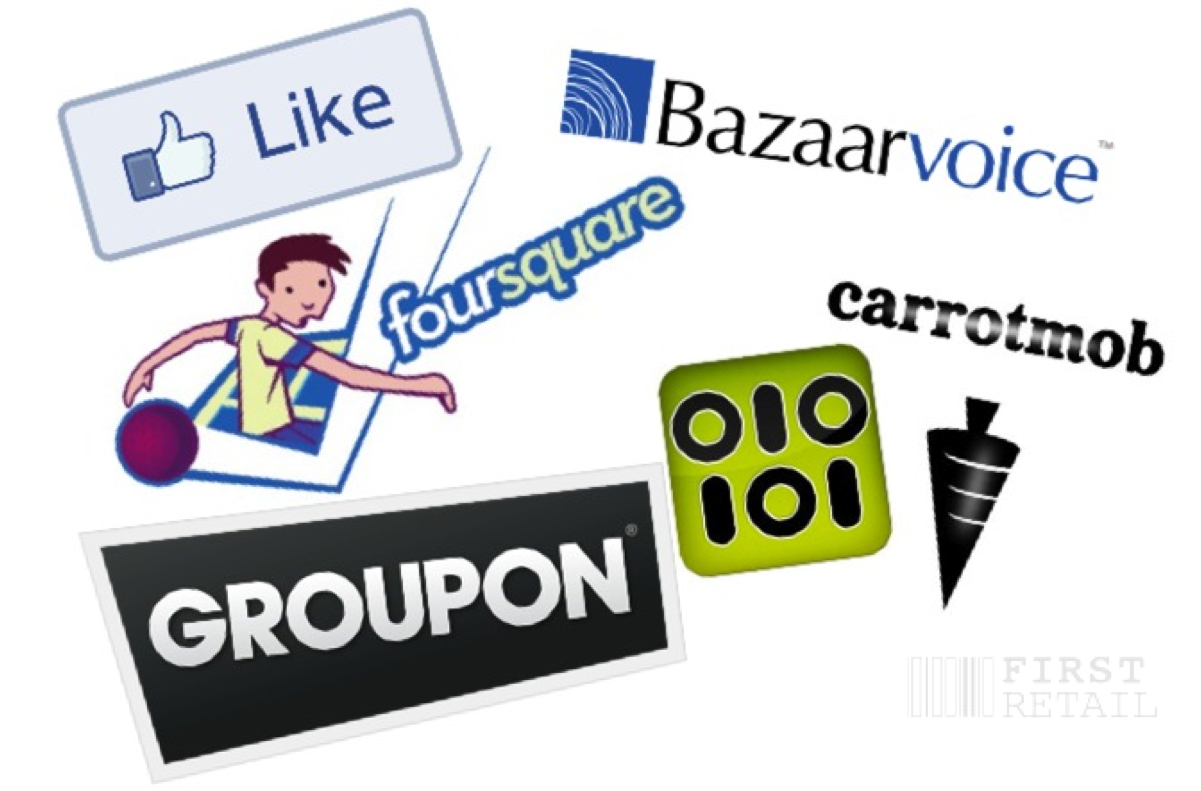
We are now witnessing another shift in power - this time from the retailer to the consumer - largely brought about by the web and the fact that the web is now bi-directional.There are three phases to this change:
- consumers will independently write, share and network
- consumers will organize into cohesive groups and act
- organizations will formalize around shared consumer needs
Write, Share and Network
Consumers meet and discuss in online forums (e.g. Yelp, Trip Advisor and Rate it all), review and comment on blogs (like Steves Digicams, Ikea Hackers and Cool Baby Kid) and comment randomly about what they want or have bought in Facebook and Twitter. In fact the retailers themselves have recognized the need for consumers to comment and review (e.g. Amazon Reviews and Best Buy reviews by BazaarVoice that are now promoted to personal networks via Facebook and Twitter.
Organize and Act
It is only a small step for consumers to unite, organize and act - or to have organizations help them do that. Begin with the current phenomenon of Groupon and LivingSocial offering discount vouchers with a social recommendation element. Then take services like PriceTector and Retail Me Not that help customers get a better deal from existing price promises and discounts. Then move it back into the physical world with an organizations like CarrotMob and Storemob, where mobs put a request to competing businesses and send a mob of customers to the winning vendor.
Formal Representation of Consumer Needs
As consumer action becomes more popular organizations will emerge to aggregate consumers by needs or other segmentations and then act on their behalf - these are the fourth parties described by the VRM movement. This will be the main power shift towards the consumer - where an ecosystem of organizations appear that allow the consumer to be spontaneously and temporarily organized into collectives that exert market forces on retailers - whether it be to source a product, set a price or to address another specific need. This infrastructure will also enable the consumer to maintain their privacy (in an age of intrusive marketing and online insecurity) and to provide information in a machine readable format under their own control this is being terms Business-to-Individual commerce.
Forecast Emergence in Mainstream: 2013 - Retailers that understand the mechanics of this power-shift will be able to successfully win the trust and patronage of consumers during their buying cycles and retain their loyalty and attention in the longer term.
Multi-channel - Stores, Online, Mobile and More
In 1999 I worked on a strategy to monetize interactive TV via a retailing proposition - this was expanded this to demonstrate a multi-channel concept with three pillars: Selection; Order; Fulfillment. Twelve years on this is reality with smart phones, tablets, streamed content and the full complement of retail fulfillment infrastructure. What is now lacking is the deep integration of those three pillars into a truly multi-channel enterprise.
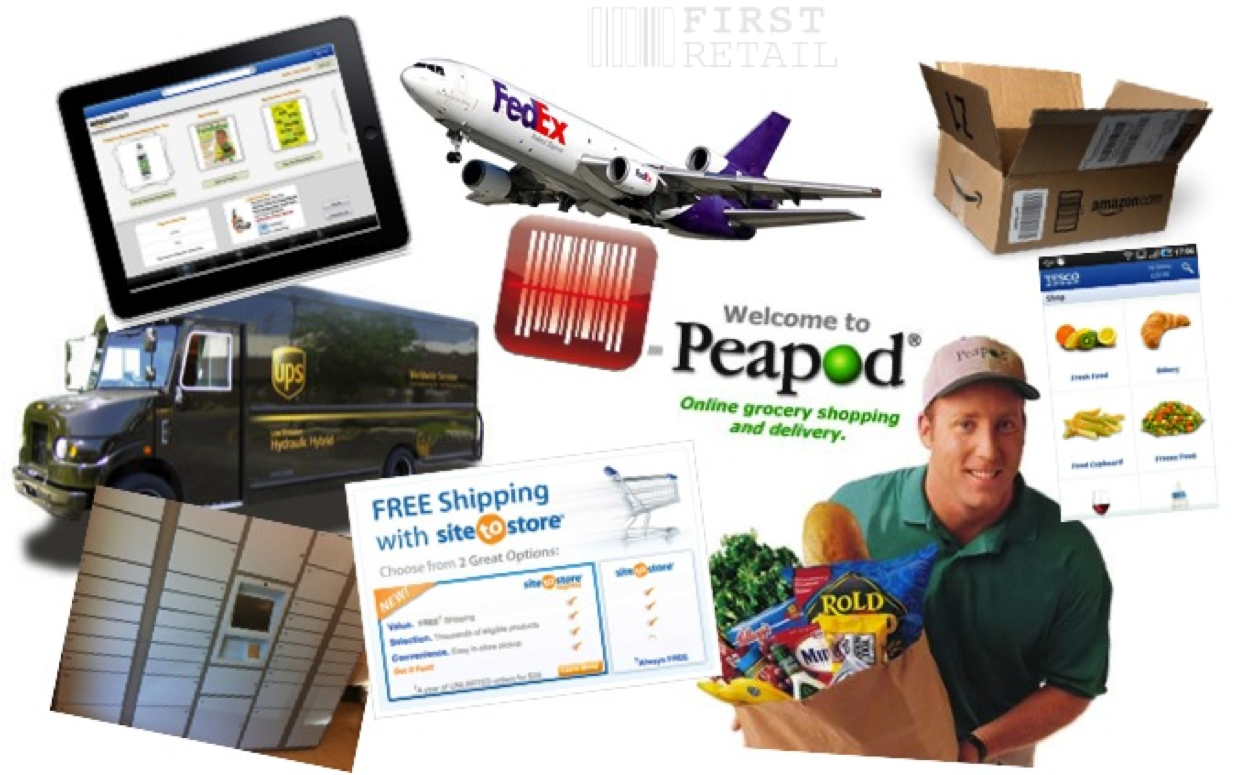
The integration is currently at an early stage: A high proportion of traditional retailers have now created online stores, a few allow their customers to pick up in store. Some online stores have mobile interfaces, a few allow the customer to order and pay online. Some online retailers have marketplaces where 3rd party vendors can sell their goods, a few allow those goods to be picked up at a physical store. Some retailers are able to take foreign credit card payments, a few are able to fulfill abroad.
When considering 'multichannel' each retailer will have unique objectives, some examples:
- using online to reach a geography currently not served by physical stores - to enter new markets nationally or internationally
- using online to increase the available assortment to customers - to move into new categories or to increase sales
- to use an existing physical distribution network to increase shipping margins - to compete with high volume pure-plays
- to leverage mobile social media for a real-time shopping experience coupled to online or kiosk based ordering and in-store fulfillment - to remove friction in the user experience
To truly wring out the benefits from the multi-channel experience will require:
- strategic retail thinking for an effective combination
- tactical experience of how that integration will work in the real-world
- to devise a set of performance metrics that will optimize processes and behaviors across what have been disparate activities for most organizations
Strategic View of Multi-Channel
Last week's headline in Business Insider, 'Best Buy, Target and Wal-Mart are Showrooms for Amazon articulated a known truth. For the bricks and mortar operators this is a hard pill to swallow, but for Amazon, how many sales can be credited to a physical browse experience? I would regularly visit my local Borders, then buy on Amazon - I am certain my book purchases reduced when that branch of Borders closed down. The Multi-Channel retailer needs to provide some benefit that results from the store experience. BestBuy is increasing its customer service proposition and providing the consumer with more information through kiosks and mobile applications.
Multi-Channel Integration
In addition to back end integration the multi-channel retailer needs to ensure a consistency of experience in all of it's aspects across the various channel. A May 2010 McKinsey report entitled The Value Proposition In MultiChannel Retailing discusses the price-value equation as to how customers perceive the a retailers proposition across channels. As the barriers to a switch have been reduced to almost zero by services such as Red Laser and PriceTector, the retailer's value proposition is key - the notion of 'abandonment' as a KPI is going to make its way from the online checkout to the physical store as customers walk out the door because of a better offer online or in another store.
Integrated Performance Metrics
A retailer has an existing network of stores in a region and is looking to lower shipping costs for their online proposition while simultaneously trying to increase the assortment available to the store shopper by providing in-store kiosks. The store assortment is 50,000 SKUs and the online assortment is 500,000 SKUs. Separately both operations will track cost per item of delivery to store and order value and frequency. Now there will be three types of item: those available in-store only, those available online only and those available online and in store. While the online proportion is small, the retailer is able to leverage space on trucks if the store and online assortment are fulfilled from the same distribution facilities. However, if the online portion is significant, the shipping costs will increase for all items going to those stores. If the online and store operations have different distribution networks, then these might need to be re-balanced to reduce the number of packages. In this and other blended cases, the metrics and targets should be revised to optimize the whole rather than the parts.
Forecast Emergence in Mainstream: 2012 - Retailers that remember to place the consumer at the heart of their proposition design will be the ones that shine. Remember, about multi-channel - it's not a site, it's an experience and customers will not interact, they will participate.
Global Markets - When Supply and Demand Move Offshore
The last twenty years has seen ever more production moving offshore. The increase in shipping traffic bringing manufactured goods from developing to developed nations has grown, even through the recent recession there was only a slight dip with current predictions signaling recovery. However retailers looking for growth outside of stagnating domestic markets are building a presence in developing economies, many of which are the source of much of their inventory. For a retailer whose country home base is neither the source of supply nor the source of demand what will be the new operational model?
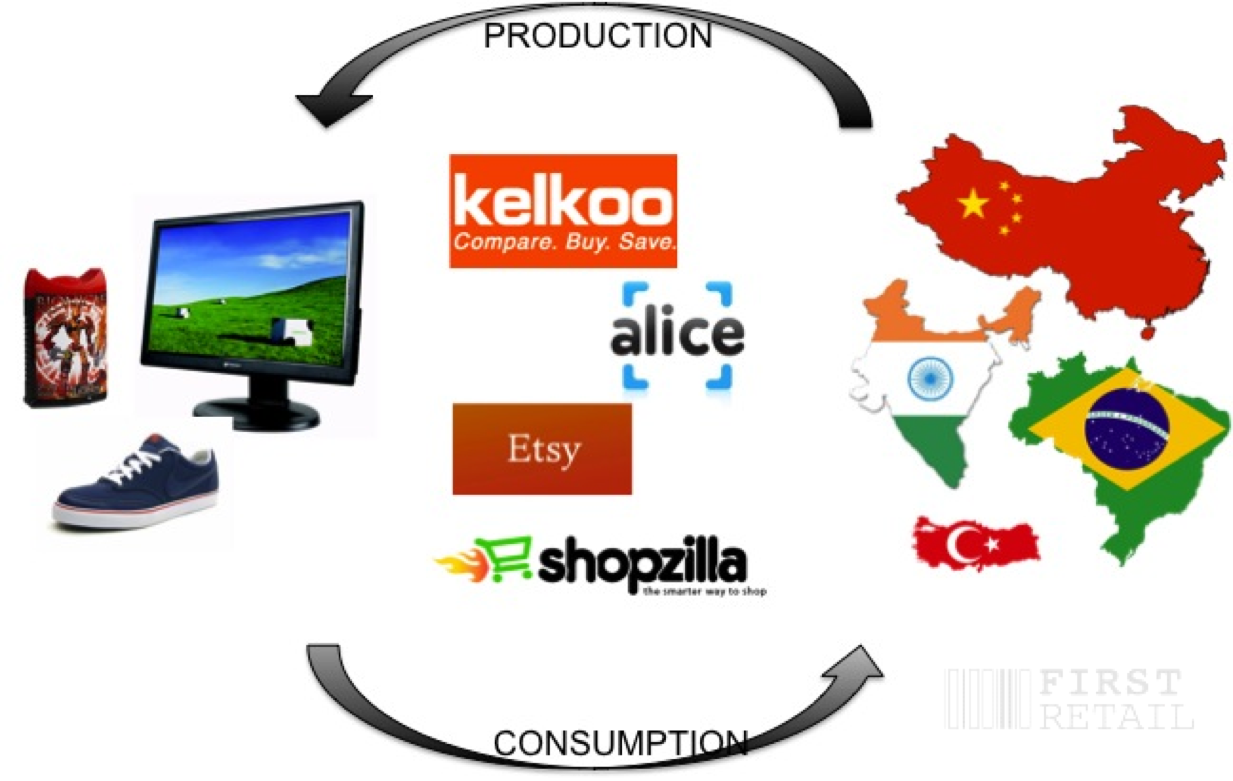
Reaching out to Distant Markets
Many retailers are using services such as FiftyOne and iShopAmerica to handle the international payments and shipping as a beach-head into a foreign market. This is useful to test a market with a view to entering it with a full operation, local site and fulfillment, perhaps even a local physical presence.
Mandated Local Sourcing
As retailers entering foreign markets discover, the country government exercises their concern for local industry by mandating local sourcing policy. A recent example - as a condition of it's purchase of a controlling share of South African chain Massmart, Walmart has to invest $14m (USD) in local sourcing initiatives.
Local Sourcing for Agility
Fashion show season guides what retailers should be stocking two seasons out and for retailers manufacturing offshore that creates a significant lead time. Buyers are continually guessing what might be popular and gambling cash on the Open to Buy. As the fashion industry moves from seasons to half seasons, perhaps even more frequently. So what happens when the market shifts - a lot of stock offloaded to the consignment buyers and auctions.
Re-establishing local sources to create manufacturing agility. Create a limited range and ship small quantities to stores then measure what is selling and manufacture more of the top sellers. A local source may be more expensive per unit cost price, but net margin when you take account of returns, markdowns and dispositions. A local source of manufacture in todays long lead time fashion industry might make the buyer seem almost psychic.
Sustainability Initiatives
Retailers have been embracing sustainability for some time - pressure from advocacy groups, environmental stewardship and social responsibility are all creating pressure to adopt new Corporate Social Responsibility initiatives.
One outcome of this is Local Sourcing. If these initiatives are properly designed, they could pay for themselves with certain supply chain savings, increased reliability of supply and if marketed well, could drive customer visits, sales and profitability.
The Virtual Retailer
Online retailers get by without investing in their own distribution facilities. Some don't even invest in inventory, preferring to engage Drop Ship Vendors to hold and manage inventory, then receiving customer orders from the retailer and fulfilling them to a shipper who provides the delivery service.
The Drop Ship Vendor can be anywhere in the world and as long as they have an optimized logistics infrastructure can ship product to any customer. In this way, the retailer can focus on providing the most compelling customer experience to customers in potentially any geography.
Forecast Emergence in Mainstream: 2013 - The notion of 'global' is changing, retailers must embrace both global supply and demand and be prepared to establish partnerships and alliances and to understand local markets in order to compete in the new international markets
Payments - The Re-Statement of Currency
Cash. Check. Finance. Credit. Micro-payments. Mobile Payments. Where next? Surely there can't be many more variations on how a Customer is able to pay for their purchases.
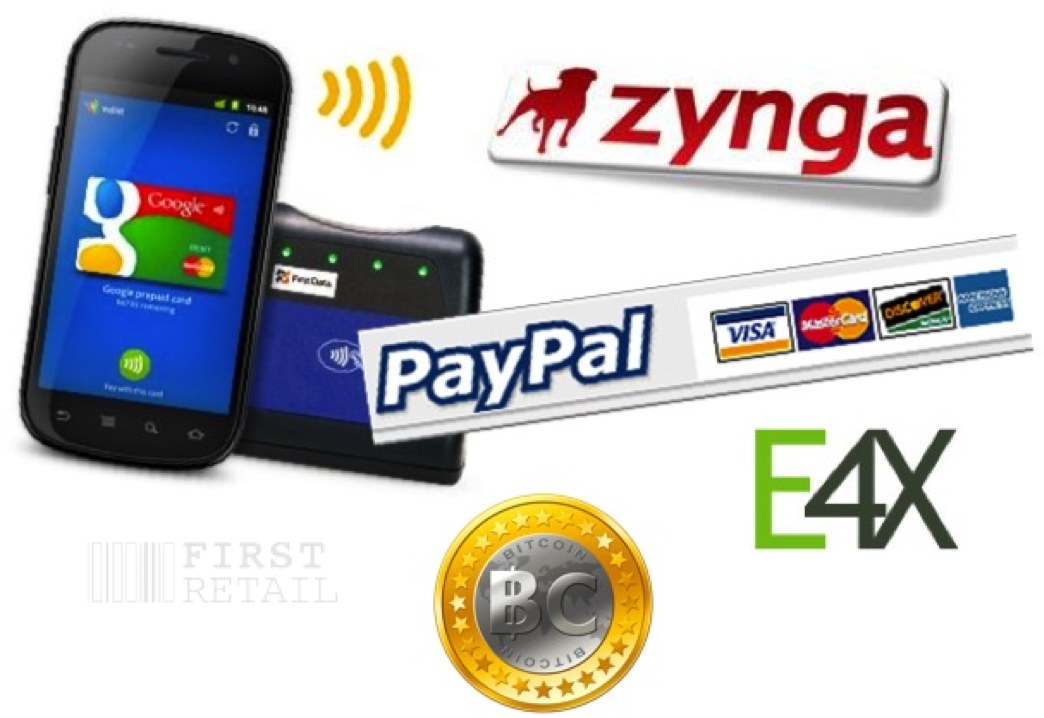
Now if we examine current trends online, not necessarily in e-commerce and look at what gets exchanged in a transaction, what emerges is not so much new forms of payment, but new forms of currency.
Is Information Currency?
Let's begin with Retailers' Customer Loyalty Schemes - going back to Green Shield Stamps - were a form of currency given to consumers in return for their purchasing. The more you bought, the more stamps you received and those stamps were redeemable for goods. Databases and loyalty schemes emerged with consumer databases and the ability to analyze in detail a customer's purchasing history at the store. The customer allowed the retailer to examine their purchase history and in return earned points. Shopping an online store will result in cookies being deployed to track your movements through the site and a sign up to pay tracks that behavior plus your actual purchase history - and records that against whatever personal details you provide. Customers' data is now a form of currency to be exchanged for points for merchandise.
Credit Card loyalty schemes and site loyalty schemes offering air-miles, loyalty points and other incentives are all offering an alternative currency in return for either purchase volume or data.
Payments and Social Media
Social Media is where the revolution begins. Social Media is funded via advertising, so the consumers continued usage creates a new currency that can be traded - Attention. According to eMarketer, the US online advertising market will be worth $31.3B by the end of 2011. Facebook's 2011 global advertising revenues will be $4B according to a recent post on TechCrunch. If over 700 billion minutes are spent online per month in Facebook, then based on these two numbers alone a person's attention is worth 0.05 cents per minute.
Social Gaming where players earn points or purchase points for real money. Let's say that Zynga is currently making $250M in revenues from customers purchasing game currency with real money. In 2009 there was an economy worth $567M in Linden Lab's SecondLife. These virtual currencies have real value and can be exchanged for money and goods. According to a post on VentureBeat 126 million hours were spent last quarter and USD$50M changes hands each month - which equates to about 2 cents per minute as the value of participating in SecondLife.
An article on PC Pro discusses various online workplaces ('sweatshops') such as Mechanical Turk, YouGov and Elance and values Mechanical Turk tasks at around 1 cent per minute.
There are online economies in operation that are working largely unregulated and without borders with rates for peoples time and effort set by the laws of supply and demand. In time these markets will come to bear on how people shop.
Digital Wallets and New Currencies
The next step in the evolution is where retailers will grant virtual cash in return for data and then accept virtual currencies in return for goods - in 2010 American Express and Zynga announced such a relationship. And the smartphone will be the access point to a digital wallet that holds a range of currencies each with different value. Taking this a few steps on, a particular currency will take on different behaviors depending on who is using it and what it is being used for. Pocket money could be given out in 'Kid-e-Cash' which will have different purchasing power for different items.
Forecast Emergence in Mainstream: 2014 - The technology for this is available today, but consumer and retailer paradigms are the barrier to adoption. These will come from left field and retailers will need to adopt quickly or lose sales.
Data Analytics - from Big to Huge to Streaming
Good Data Strategy is at the heart of an efficient supply chain, effective store and e-store operations and an engaging customer relationship. In recent years retailers competed on analytics, ironing out cost in the supply chain, negotiating with vendors and creating loyalty programs and developing efficient decision support systems and vast data warehouses. The next five years will see a proliferation of sources of that data and applications to process it. The acquisition, organization and analysis of mountains of data that dwarf what has come before.
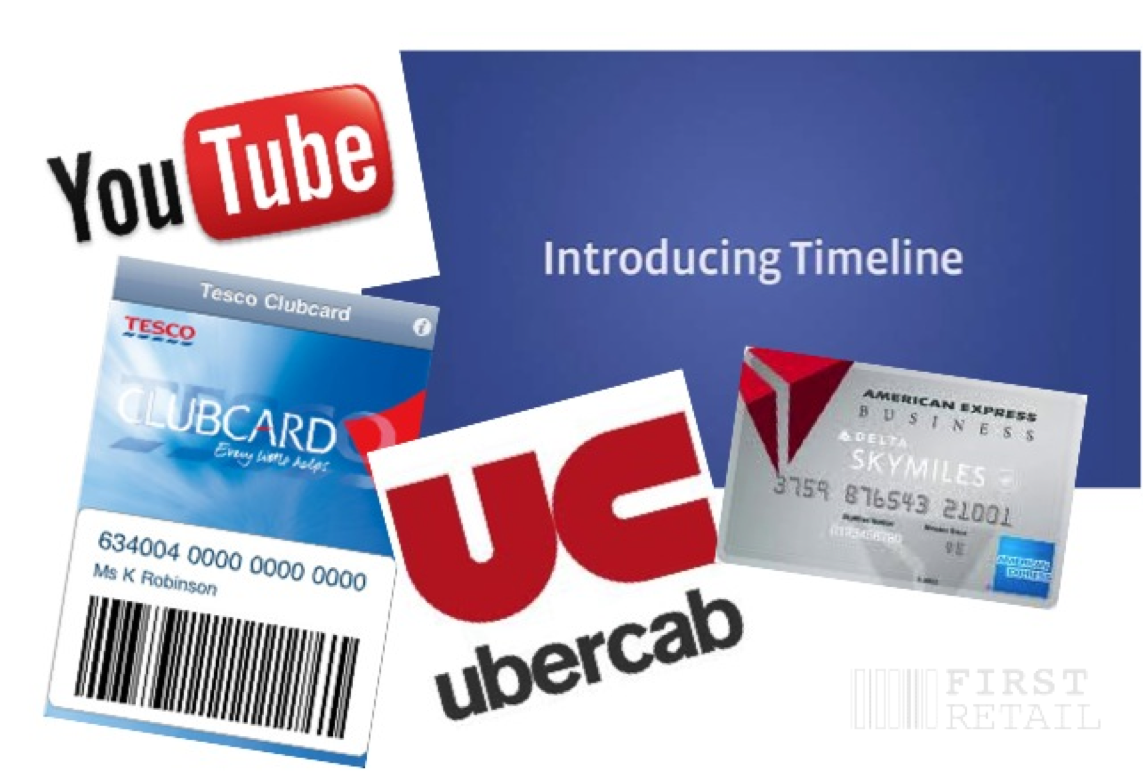
What Data is Available
Today's retailers are blessed with Sales transaction data from stores and every other channel, fully attributed item data, supply chain data that traces the physical items progress from Manufacturer to the Customer, customer data to include profile, preference and loyalty, store data, workforce data, call center data, site and usage statistics. Walmart's Retail Link pioneered sharing the vast tracts of data with supply chain partners - providing visibility that drove down supply-chain costs for all parties.
Dr Andreas Wiegend's course on the Social Data Revolution provides a definition: Social data refers to the process where individuals generate and share data: Data about themselves, data about their relationships with others, data about products and services, data about the world. Text based shared content has been around for a while on Yelp and Angie's List but the sharing of data is expanding beyond reviews: Sites like Oyster and Foodspotting provide a more truthful crowd-sourced view of hotels and restaurants through instantly uploaded photos; TurntableFM and LastFM allow users to publish their playlists; and Facebook Places, Pachube and Nimbits take this a step further, building out an internet of things
As retailers really begin to understand their customers - in smaller and smaller segments down to the individual, this social data will increase in significance.
Join and Analyze
Joining up disparate data to deliver unique benefits will be the challenge as soon as the datasets become available and usable. My belief is that the ongoing inability to settle on data standards will prevail and so we should not expect unifying global schemas. However, the semantic web will allow data to be described such that with some effort data sources can be mapped sufficiently well to allow automated applications to act on such data.
Services that join up and make sense of disparate or messy data will emerge to prepare data for analysis. Denodo's Data Virtualization and Data Federation platform and First Retail's Semantic ETL are examples of such services. Once the data is in a somewhat structured format, there are plenty of analysis platforms and consultancies who will deliver a solution - Cloudera, thinkbig and Pete Warden's Data Science Toolkit offer non-specific solutions and companies like EYC, Dunnhumby, Demandtec and Revionics tackle specifically retail problems such as loyalty, pricing and marketing mix.
Retailers will need to emerge from analysis of their data silos to joining up the data and understanding the effects of one part of their business on another. For example, price sensitivity applied at the segment level should be used to drive promotions - this will only be achieved when customer profile and transition data can be crossed with pricing and promotion histories.
A New Order
It's easy to say that retail business decisions should be made based on accurate and up-to-date information from around the business, from competitors, vendors and consumers, but that is not really the problem at hand. The biggest problem is one of information logistics - getting that data to the right decision maker at the right time.
A few solutions are emerging - many of them in-house built on Business Intelligence and Analytics platforms such as SaS Retail or the Retail ERP platforms as offered by companies like Oracle. Ecommera's Intelligent Trader presents a set of out of box dashboards that allow the multi-channel retailer to consolidate and deliver information.
The challenge for retailers is to evolve their processes, information systems and performance measures to be more information-driven. This will require strong direction from CIO's and CTO's, strategic investment in technology and some tactical quick wins to demonstrate the huge potential benefits.
Demanding a new Analytic Infrastructure
I believe that most retail businesses can be summarized as four concurrent but asynchronous processes - that equate to 'lifecycles':
- Customer Lifecycle - from the time a customer discovers retailer to the time they say 'remove me from your database'
- Customer Order Lifecycle - from the moment the order is placed, thru' purchase, delivery and return or refund
- Replenishment Order Lifecycle - from the moment a Vendor order is placed through the time it is available in the warehouse or store
- Product Lifecycle - from the time a product is announced to its end of life and disposition
I have a notion of four rivers of information flowing around the business - each river providing the most granular detail around the four life-cycles - and the information being available to and from each business process - a 'retail information grid'. So when a new process is defined and systems designed, an explicit specification of what data will feed into and out of the grid should be made available.
The vision is that I can query the grid to find a list of customers that match a specific profile (e.g. customers that looked for a duvet priced over $100 in February 2011); the location and status of a customer order (e.g. all orders with an Oregon ship to address being shipped Fedex that are more than one day late); inbound order (e.g. which departments have orders due for delivery at stores before August 10th); or product (e.g. show me all products that had a dip in sales greater than 10% between January 1st and January 15th).
Forecast Emergence in Mainstream: 2016 - This is not simple, it is a journey that retailers must embark upon now to ensure that they are able to make competitive business decisions.
Things I read to get here
- The Untold Story: How the iPhone Blew Up the Wireless Industry from Wired Magazine, 2008
- A review of the book Ender's Game in Amazon.com written by the book's author, Orson Scott-Card Amazon.com, 1999
- The Cluetrain Manifesto by Levine, Locke, Searls & Weinberger, 1999
- C3 Meets Internet Identity, VRM and Personal Data Ecosystems on Opus Research, May 2011
- The Intention Economy and the Evolution of Relationship Management On the Spiral June 2011
- Preparing the iPad for frictionless retailing on RealTea.net 2010
- Various papers on Multi-Channel Retail Week, Financial Times European Retail Analyst and DiRECT retail models, 1999
- Best Buy tries another strategy to entice shoppers
- Leaving Home, Global Powers of Retailing Deloitte Consulting, 2011
- Retail's Hottest Emerging Markets, AT Kearney, 2011
- Walmart deal inspires inspection of global sourcing trade-off Procurement Leaders, 2011
- South African Regulators Allow Walmart Deal After Fierce Debate Huffington Post, June 2011
- Sustainable Procurement Procurement Leaders, 2011
- M&S India to increase local sourcing The Hindu Business Line, June 2011
- The benefits of local sourcing Retail Week, 2010
- NRF: Expected rise in container traffic sign of economic recoveryRetailing Today, April 2011
- 2008 Port Traffic Lowest in Four Years Calculated Risk Blog, 2009
- UK payment startups join forces in $87 million merger Venturebeat, May 2011
- Bitcoin, the peer to peer currency that hopes to change the world from TheNextWeb June, 2011
- Visa acquires Fundamo to offer mobile money to the unbanked VentureBeat June 2011
- Bitcoin: inside the encrypted, peer-to-peer digital currency Ars Technica, June 2011
- Evolution of Currency Heathervescent
- The Attention Economy and Mobile Web 2.0 Mobile Jones 2007
- Understanding Attention Scarcity – Why The Attention Economy Belongs to Peers, Not Brands On the Spiral April 2011
- The Attention Economy: An Overview ReadWriteWeb 2007
- Is the attention economy the new currency Zmogo 2009
- Jack Dorsey, Founder and CEO of Square in conversation at the Churchill Club of San Francisco, May 2011
- Accel Furthers Online Payments Expertise With New EIR From iPay on TechCrunch, July 2011
- Payment startup Dynamics reveals its A-List investors from Venturebeat, July 2011
- Gartner Says Worldwide Mobile Payment Users to Reach 141 Million in 2011, Gartner, July 2011
- Big data: The next frontier for innovation, competition and productivity McKinsey May 2011
- Building with big data Schumpeter in the Economist, May 2011
- Data Mining and E-Business: The Social Data Revolution Dr Andreas Weigend at Stanford University (this is a wiki, so it will change)
- Competitive Advantage in Retail Through Analytics: Developing Insights, Creating Value Information Management 2006
- 11 Big-Data Analytics Predictions for 2011 TDWI March 2011
- The Social Data Revolutions Andreas Weigend in the Harvard Business Review, 2009
- First Camera, Then Fork New York Times, April 2010
Back in 1999 I wrote a similar piece on the trends we should be expecting 2000 - 2010. Retailing Holy Grails for the New Millennium